I recently read a Consistent Golf blog that gave an easy solution to eliminate chipping and pitching yips. You may not have the yips but we all need to smooth out the transition to avoid jerking our club in the transition. Practice with this technique to build confidence for success during your round of golf. I’ve tried it and it really works.
You know how to swing a club to make the perfect chip or pitch (with your feet close together and 60% of your weight on your leading foot), but when you are on the course with a must make shot, your brain may backfire, lurch or pass gas. You hit it fat or thin. You need to build confidence to get your body moving with fluid motion during the swing. You need a way to trick your mind to find the motion of the perfect chip or pitch and then execute the shot.
Note: Practice your chipping separate from your pitching. Chipping is more like a putting swing with a flat leading wrist where the ball flies a shorter distance than it runs out on the green (depending on the loft of the club that you use). Pitching is typically a longer shot where the club cuts under the ball to create a reverse spin to limit the roll-out on the green. Decide on the roll-out that you need, then choose the right club for the chip or pitch that you need to get close to the hole.

David Leadbetter illustrates the right way to chip with your feet close together and 60% of your weight on your leading foot.
Solution: Build muscle memory and rhythm of a great chip. All you need is to get your mind and body in a mental and physical state where you can make a confident swing. Practicing this tip will give you the confidence and using the 3 ball preparation will relax your body to execute on the course.
YIPS cause JERKY SWINGS. Power and distance comes from the height of your backswing so make sure that you practice for each height. Eliminate any jerky action in the transition from backswing to downswing. Use the weight of your club (not the force of your arms) to allow for a smooth transition and impact through the ball.
1/ With about 25 golf balls, hit one ball after another, as quickly as possible, without any concern for the distance or location. Your mind will automatically know if each hit was good or bad. You can feel a clean shot off the center-line of your club when you impact your ball before skimming the ground. This will help you smooth out your swing with a free effortless feeling.
2/ Now line of 10 ball in a row and repeat the free swing exercise.
3/ Now repeat this with 3 balls in a row.
4/ On the course, imagine that you are hitting 3 balls with 3 swings as you move closer in continuous motion and finally hitting your ball on your third “fluid” swing.
Have you ever noticed that you can mishit a ball and then drop another ball and hit it perfectly. It has to do with being locked up on your first attempt. Free your body, swing with fluid motion and create success. Practice with GOLFSTR+ for all 6 swing fixes. Buy one today at www.golfstr.com



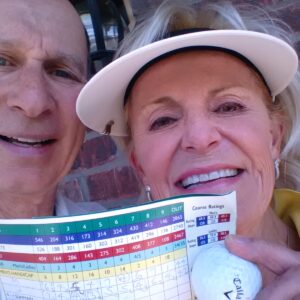
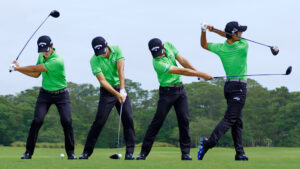
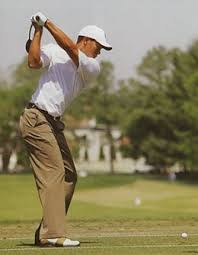

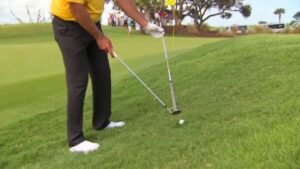

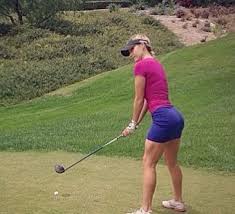
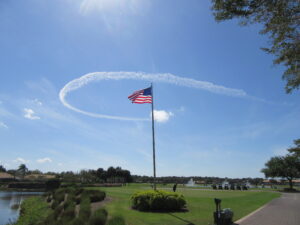 Again we wintered in Florida at a golf and tennis community where the weather was perfect and the comradery was wonderful. I was really looking for an excuse to share this amazing photo of Old Glory over our practice putting green. I’m not sure how the cloud was formed in a circle but it was an awesome moment when I looked up.
Again we wintered in Florida at a golf and tennis community where the weather was perfect and the comradery was wonderful. I was really looking for an excuse to share this amazing photo of Old Glory over our practice putting green. I’m not sure how the cloud was formed in a circle but it was an awesome moment when I looked up. I work from Florida so I only have limited time for tennis and some golf. The golf course view from my office window was like watching the
I work from Florida so I only have limited time for tennis and some golf. The golf course view from my office window was like watching the  We golf to enjoy the exercise and friendships but each course has its own beauty. In Florida the course layouts through forests and ponds are spectacular. The wildlife is also an interesting addition. Sure there are plenty of birds but when you see a pelican grabbed from below by a lunging alligator and all that remains are floating feathers, you know that golfers should beware. After a few months of watching our friendly alligator (Herkimer) we heard that he was feasting on local cats and small dogs. His capture took 2 days as he broke the line from a 3 pronged fishing hook on their first try. I thought you might like to see the video of his capture on our front lawn.
We golf to enjoy the exercise and friendships but each course has its own beauty. In Florida the course layouts through forests and ponds are spectacular. The wildlife is also an interesting addition. Sure there are plenty of birds but when you see a pelican grabbed from below by a lunging alligator and all that remains are floating feathers, you know that golfers should beware. After a few months of watching our friendly alligator (Herkimer) we heard that he was feasting on local cats and small dogs. His capture took 2 days as he broke the line from a 3 pronged fishing hook on their first try. I thought you might like to see the video of his capture on our front lawn.